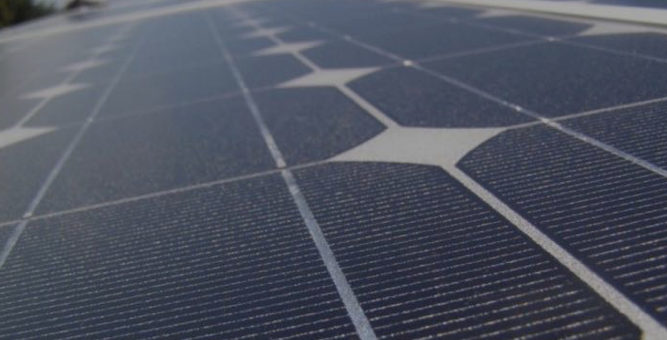After hundreds of people packed Austin City Hall last week to demand strong action on climate change, City Council has made a decision about the future of the Austin Energy Resource, Generation, and Climate Protection Plan. In the end, they decided to approve a 65 percent renewable energy by 2027 goal, increasing our city’s current renewable goal but falling short of the call from many environmental activists to take stronger action.
Why does the Austin Energy Resource, Generation, and Climate Protection Plan matter?
One of the biggest ways that Austin has already begun taking action on climate change is by reducing emissions from Austin Energy, our city’s publicly-owned electric utility. Since Austin Energy is essentially owned by all of us (the customers and taxpayers), we have a say in where the utility decides to get its energy. This is done through something called generation resource planning.
Every few years, the city’s Austin Energy Resource, Generation, and Climate Protection Plan is updated. The plan basically serves as a roadmap, determining where Austin will get its energy for the next several years. Will it come from solar, wind, coal, natural gas? That’s what the plan helps to decide.
So what did the City Council decide to do?
In large part, City Council decided to approve the recommendations put forth by a citizen working group, which include:
- Increasing our city’s renewable energy goal to 65 percent by 2027, and to do so while maintaining the city’s current affordability goal of capping rate increases at 2 percent per year and keeping rates in the lower 50th percentile of rates statewide.
- Reaffirming the existing goal to begin retiring Austin’s only remaining coal-fired power plant by 2022
- Increasing local energy storage goals by 10 MW over the previous goal
While these goals do advance Austin’s renewable energy transition (our current renewable energy goal is 55 percent by 2025), many environmental organizations and activists argued that they do not go far enough. Especially in light of President Donald Trump’s announcement to withdraw the US from the Paris Agreement, many feel that now is the time for Austin to take a bolder statement and leadership position.
You can learn more about the debate between approving the working group recommendations and advocating for stronger action with a blog post we published earlier this month, entitled, “Energy, Climate, and Austin.”
Last week when a public hearing was held at City Hall on the generation plan, hundreds of Austinites turned out to ask City Council to support a 75 percent by 2027 renewable energy goal and even more importantly, to support a 100 percent carbon-free utility goal by 2030.
“I urge you to please, look at this not just as what is comfortable to do, but what is the most that we can do, the fastest that we can do it,” said Kaiba White (energy policy and outreach specialist at Public Citizen Texas) at the hearing. “And that’s what leadership is…It is now our job as a community to push our utility to go the next step to get to a carbon-free energy supply, completely carbon-free, and to do it as quickly as possible because there is no time to waste.” You can listen to all of the testimony from the hearing here>>
In the end, City Council voted to approve the working group’s recommendations (including its 65 percent renewable energy goal), but to require Austin Energy to conduct a number of studies assessing the feasibility of a 100 percent carbon-free by 2030 goal and an 80 percent renewable energy goal by 2030. These studies must be completed by September 2019 so that City Council can act on them accordingly.
This of course came as a disappointment to those who had advocated for stronger action. Others saw it as a good compromise and a strong step forward toward achieving our city’s climate goals.
“This is a win for Austin ratepayers and a win for the environment,” said Cyrus Reed (Conservation Director of the Lone Star Chapter of the Sierra Club) in a press release. Reed has spoken in support of the working group’s recommendations, writing in an earlier blog post that, “Sierra Club believes a net-zero carbon emissions goal is achievable by 2030, although a specific analysis has not been conducted. An additional study by the utility would help convince all of our stakeholders — including large commercial and industrial customers and advocates for low-income communities — that it is achievable and affordable…”
Council Member Leslie Pool (who pushed to include the studies and some aspirational goals in Council’s final decision) also celebrated Council’s adoption of the new generation plan, writing on Facebook that, “What a win today on our renewable energy and zero carbon emissions goals! We truly are blessed in the Austin community to be debating how fast and how expansive our climate goals should be instead of arguing over whether to include renewable energy at all in our portfolio.”



